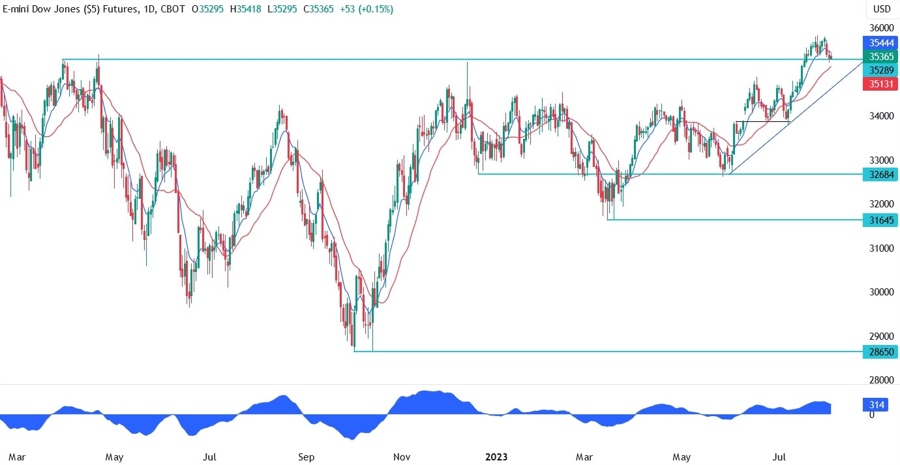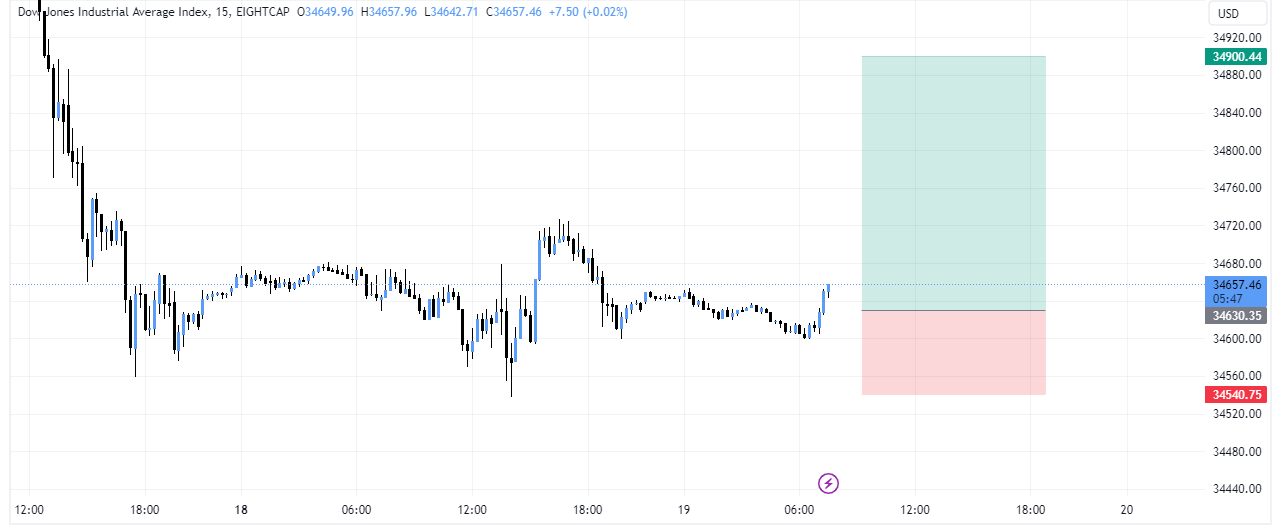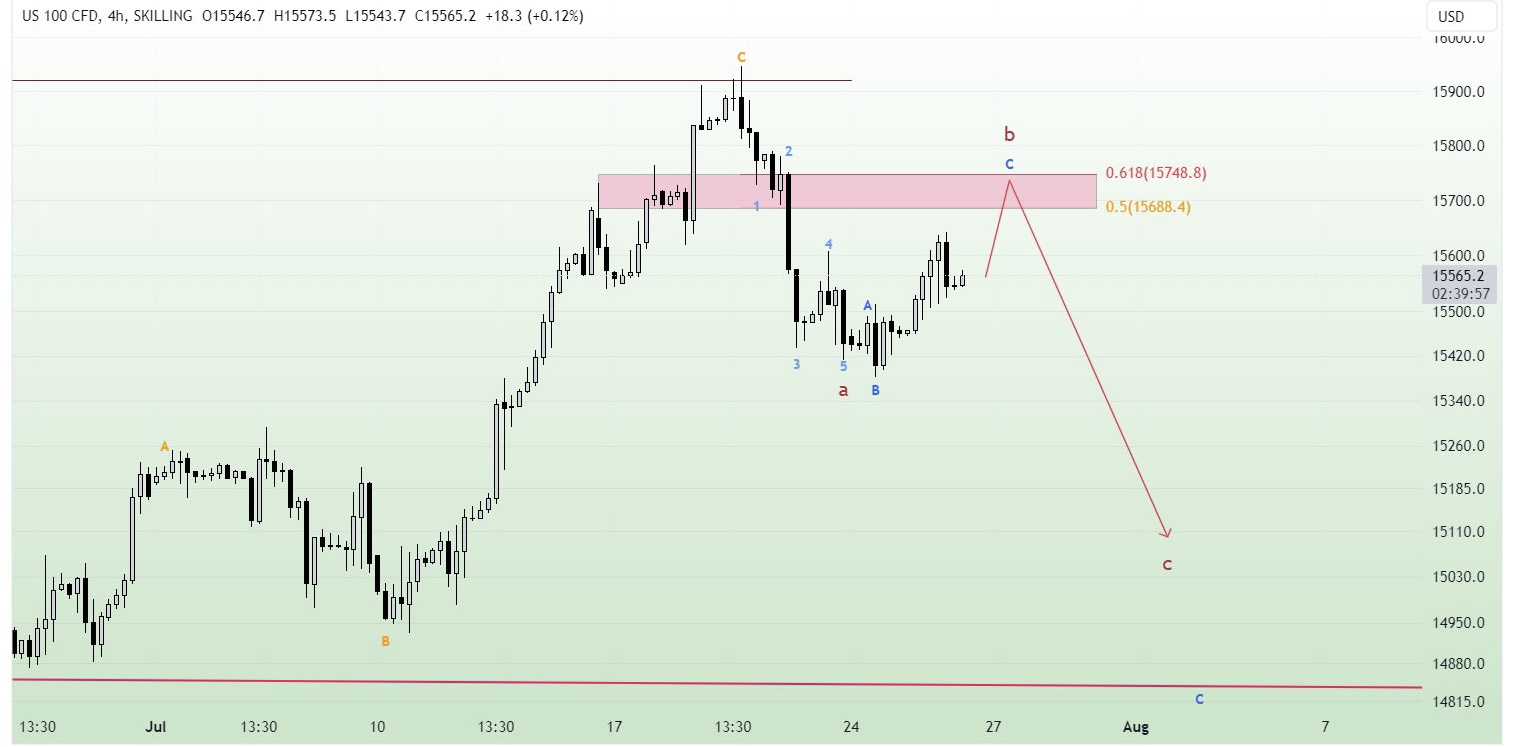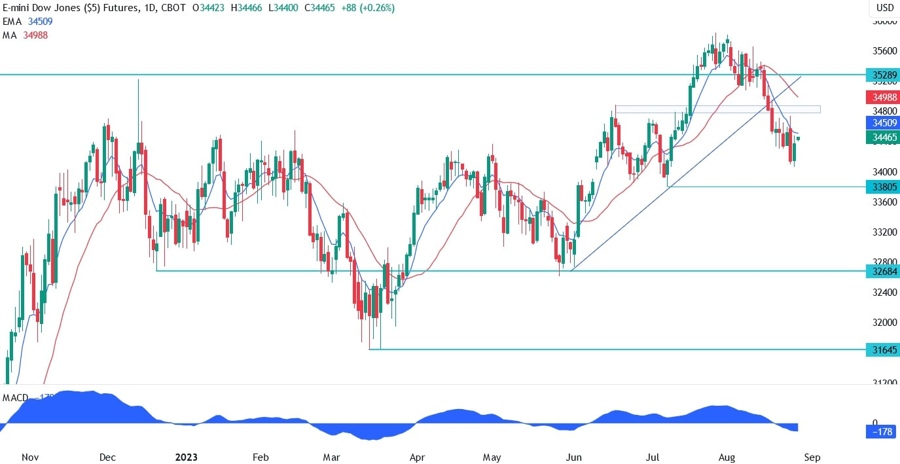FTSE Bursa Malaysia Index-KLCI Index
Parent Index
NA
Indices informations
Listed Exchanges
| Bursa Malaysia |
Related Instuments
| N/A |
Sector Represented
| Telecommunications Service Providers |
| Banking |
| Travel, Leisure & Hospitality |
| Plantation |
| Retailers |
Indices
- BSE SENSEX
- CAC 40
- CBOE NASDAQ-100 Volatility Index (VXN)
- CBOE Volatility Index (VIX)
- China50-FTSE China A50 Index
- DAX
- DAX PERFORMANCE-INDEX-GDAXI
- DE40-Germany 40 Index DAX
- Dollar Index USDX-DXY-DX-Dixie
- Dow Jones Industrial Average-DJIA
- EURO STOXX 50 SX5E
- FTSE 100 Index-UK100 Index
- Germany 30
- Hang Seng Index
- IBEX 35-Spain 35
- NASDAQ Composite
- NASDAQ-100
- Nikkei 225
- Russell 2000 Index
- S&P/ASX 200
- Singapore Blue Chip Index-STI
- Swiss Market Index (SMI) Switzerland Blue Chip Index
- TecDax Price Index
- TECHDE30-Germany Tech 30 Index
- US Tech 100 Index UT100
- US2000-US Small Cap 2000 Index
- US30-US Wall Street 30 Index
- US30M- US Wall Street 30 Index M
- US500-S&P 500 (GSPC, INX, SPX)
- US500-US SPX 500 Index
- US500M-S&P 500 Mini
- All Ordinaries
- Amsterdam Exchange Index AEX index
- ATX-Austrian Traded Index (ATX)
- BEL 20
- BELEX15
- BIRS
- BIST-Borsa Istanbul
- CROBEX
- EGX 30 Index Egypts Leading Stock Market Index
- FTSE All-Share Index
- FTSE Bursa Malaysia Index-KLCI Index
- FTSE MIB-FTSE MIB 40
- Índice Bursátil Caracas (IBC)
- Índice Bursátil de Capitalización-The General Index
- Indice de Precios y Cotizaciones
- KOSPI
- KSE 100 Index
- MDAX
- MERVAL
- MICEX-The MOEX Russia Index
- OBX Index
- OMX Copenhagen 20 (OMXC20)
- OMX Helsinki 25 (OMXH25)
- OMX Stockholm 30 (OMXS30)
- PSE Index (PSEi)
- PSI20-PSI-20
- S&P/NZX 50 Index
- S&P/TSX 60
- S&P/TSX Composite Index
- S&P/TSX Venture Composite Index
- SOFIX
- SSE Composite Index (上证综指) Shanghai Composite Index
- Straits Times Index (STI)
- SZSE Component Index (深证成指)
- TA-125 Tel Aviv 125 Index
- Taiwan Capitalization Weighted Stock Index (TAIEX)
- The Indice de Precio Selectivo de Acciones- IPC
- CBOE NASDAQ-100 BuyWrite Index (BXN)
- Hang Seng China H-Financials Index
- IBOVESPA-The Bovespa Index-Brazil Stock Exchange Index
- NASDAQ Financial-100
- SDAX – Small cap
- TecDAX
- aaa
- Amex Gold BUGS Index
- Amex Oil Index
- AScX index – Small cap
- ASE Weighted Index
- Athex 20
- Barrons 400 Index
- BELEXline
- BET-10
- BSE DCI
- BSE FCI
- BUMIX – Mid cap
- BUX – Large cap
- CA60-Canada 60 Index
- CAC All Share
- CAC All-Tradable
- CAC Large 60
- CAC Mid & Small
- CAC Mid 60
- CAC Next 20
- CAC Small
- Capital Markets Index
- CASPI
- CBOE DJIA BuyWrite Index (BXD)
- CBOE S&P 500 BuyWrite Index (BXM)
- CBV Index
- CBV Real Estate Index
- CECEEUR
- Central European Blue Chip Index – Regional large cap
- ChinaH-Hong Kong China H-shares Index
- COLCAP
- Colombo Stock Exchange Sector indices (CSE Sectors)
- CROBIS
- CSC X
- CSE 30
- CSE50
- CSI
- CSI 100 Index (中证100指数)
- CSI 300 Index (沪深300指数)
- Dow Jones Global Titans 50
- Dow Jones Transportation Average
- Dow Jones Utility Average
- DSE
- DSEX
- DSM200
- EGX 100 Index
- EGX 50 Index
- EGX 70 Index
- ERS10
- FIRS
- FT 30 Index
- FTSE 350 Index
- FTSE AIM All-Share Index
- FTSE AIM UK 50 Index
- FTSE All-World index series
- FTSE Fledgling Index
- FTSE Italia Mid Cap
- FTSE MID 250 Index
- FTSE SmallCap Index
- FTSE techMark Index
- FTSE/Athex Large Cap
- FTSE/JSE All Share Index
- FTSE/JSE Top 40 Index
- FTSEurofirst 300 Index
- FTSEurofirst Euro Supersector Indices
- GSE All-Share Index
- Hang Seng China Enterprises Index
- Hang Seng China-Affiliated Corporations Index
- HK50
- IDX Composite
- IGBC
- IPSA
- ISEQ 20-The Ireland Overall Stock Exchange Index-ISEQ20
- IT40-Italy 40 Index
- Jakarta Islamic Index (JII)
- Jamaica Stock Exchange (JSE)
- KASE
- KMI 30 Index
- KOSDAQ
- KSE All Share Index
- KSE-30 Index
- Kuala Lumpur Composite Index
- LASI
- LQ-45
- LuxX Index – Luxembourg Stock Exchange
- MADEX index
- Madrid Stock Exchange General Index
- MASI index
- MESDAQ
- MIDDE50-Germany Mid 50 Index
- MIDDE60-Germany Mid 60 Index
- Milanka Price Index (MPI)
- MSCI EAFE
- MSCI GCC
- MSCI Hong Kong Index
- MSCI World
- MSM-30
- NEPSE Index – Nepal Stock Exchange
- NETH25
- NIFTY 100 LOW VOLATILITY 30
- NIFTY 200
- NIFTY ALPHA 50
- NIFTY BANK
- NIFTY CPSE
- NIFTY ENERGY
- NIFTY FINANCE
- NIFTY FMCG
- NIFTY INDIA CONSUMPTION
- NIFTY INFRA
- NIFTY IT
- NIFTY MEDIA
- NIFTY METAL
- NIFTY MIDCAP 100
- NIFTY MIDCAP 50
- NIFTY MIDCAP LIQUID 15
- NIFTY MIDSMALLCAP 400
- NIFTY MNC
- NIFTY Next 50
- NIFTY PHARMA
- NIFTY PSE
- NIFTY PSU BANK
- NIFTY PVT BANK
- NIFTY REALTY
- NIFTY SERV SECTOR
- NIFTY SMALLCAP 100
- NIFTY SMALLCAP 250
- NIFTY SMALLCAP 50
- NIFTY100 EQUAL WEIGHT
- NIFTY100 LIQUID 15
- NIFTY200 QUALITY 30
- NIFTY50 EQUAL WEIGHT
- Nor25-Norway 25 Index
- NSE 30 Index
- NSE All Share Index
- NSE NIFTY 50
- NYSC Arca Major Market Index
- NYSE American Composite Index
- OMX Iceland 15 (discontinued)
- OMX Iceland 6
- OMX Stockholm PI (OMXSPI)
- OMX Vilnius (OMXV)
- OTCM QX ADR 30 Index
- Palisades Water Index (ZWI)
- PFTS index
- Philadelphia Gold and Silver Index
- PHLX Semiconductor Sector
- PSE All Shares Index
- PSE Financials Index
- PSE Mining and Oil Index
- PSI/GERAL
- PX Index
- RTS Index (RTSI)
- Russell 1000
- Russell 2500
- Russell 3000
- Russell MidCap
- Russell Small Cap Completeness
- S&P 100
- S&P 1500
- S&P Asia 50
- S&P BSE 500
- S&P Europe 350
- S&P Global 100
- S&P Global 1200
- S&P Latin America 40
- S&P MidCap 400
- S&P MidCap 400/BARRA Growth
- S&P MidCap 400/BARRA Value
- S&P SmallCap 600
- S&P SmallCap 600/BARRA Growth
- S&P SmallCap 600/BARRA Value
- S&P Vietnam 10 Index
- S&P/ASX 20
- S&P/ASX 300
- S&P/ASX 50
- SA40-South Africa 40 Index
- SBF 120
- SE30-Sweden 30 Index
- SET Index
- SET100 Index
- SET50 Index
- Slovak Share Index
- SMI Expanded
- SMI MID
- SPBLPGPT
- SSE 180 Index (上证180指数)
- SSE 50 Index (上证50指数)
- STOXX Europe 600
- SWI20-Switzerland 20 Index
- Swiss Leader Index (SLI)
- Swiss Performance Index (SPI)
- SZSE 100 Index (深证100指数)
- SZSE 200 Index (深证200指数)
- SZSE 300 Index (深证300指数)
- TA-35 Index
- TA-90
- Tadawul
- TEDPIX
- TEPIX
- The Global Dow
- The GSE Composite Index.
- THETAUSD Theta Network Token vs US Dollar
- TOPIX
- Trinidad and Tobago Stock Exchange (TTSE)
- UBS 100 Index
- Value Line Composite Index
- VN Index
- WIG-Warszawski Indeks Giełdowy
- WIG30
- Wilshire 4500
- Wilshire 5000
- Zimbabwe Industrial Index
- Zimbabwe Mining Index
FTSE Bursa Malaysia KLCI Index: An Overview
The FTSE Bursa Malaysia Kuala Lumpur Composite Index (KLCI) is the primary stock market index for Malaysia. It represents the performance of the top 30 companies listed on the Bursa Malaysia, which is the country’s national stock exchange.
The KLCI serves as a barometer of the overall performance of the Malaysian stock market and is widely regarded as a key benchmark for investors and fund managers in the region. It provides insights into the health and direction of the Malaysian economy, as well as the overall sentiment of local and foreign investors.
Composition and Methodology
The FTSE Bursa Malaysia KLCI is a market-capitalization-weighted index, meaning that the weightage of each component is determined by its market value relative to the total market value of all the index constituents. The index is reviewed every quarter to ensure it reflects the current market conditions and includes the most liquid and representative stocks.
The index composition covers various sectors, including finance, plantation, consumer products, telecommunications, and industrial products. Some of the prominent companies included in the KLCI are Maybank, Public Bank, Tenaga Nasional, and Malayan Banking.
Importance and Impact
The KLCI acts as a crucial indicator of investor sentiment and market performance in Malaysia. Its movements are closely followed and analyzed by investors, analysts, and policymakers. A rising KLCI generally indicates positive investor confidence and economic growth, while a declining index suggests negative sentiment and potential economic challenges.
For investors, the KLCI offers a benchmark against which they can measure the performance of their portfolios. Many funds, both local and foreign, use the index as a basis for constructing their investment strategies and assessing the performance of their investments in Malaysian equities.
Investing in the KLCI
Investors can gain exposure to the FTSE Bursa Malaysia KLCI by investing in index funds or exchange-traded funds (ETFs) that track the performance of the index. These investment vehicles allow investors to participate in the performance of the overall market without having to select individual stocks.
Alternatively, investors can also invest directly in the constituent companies of the KLCI based on their own research and analysis. However, this requires a deeper understanding of the individual stocks and their fundamentals.
Conclusion
The FTSE Bursa Malaysia KLCI is a vital index that reflects the performance and sentiment of the Malaysian stock market. It serves as a benchmark for both local and foreign investors, providing valuable insights into the country’s economic health and investor confidence. Whether through index funds or direct investments, the KLCI offers opportunities for investors to participate in Malaysia’s dynamic equity market.
FTSE Bursa Malaysia KLCI Key Data Points
The FTSE Bursa Malaysia Kuala Lumpur Composite Index (KLCI) is an important benchmark index that tracks the performance of the Malaysian stock market. It is widely followed by investors and serves as a key data point for understanding the overall health and direction of the Malaysian economy. Here are some key data points to consider when analyzing the FTSE Bursa Malaysia KLCI:
1. Constituent Companies
The KLCI consists of the top 30 companies listed on the Bursa Malaysia stock exchange, selected based on market capitalization and liquidity. These companies represent various sectors, including finance, telecommunications, consumer products, and industrial goods. Tracking the performance of these constituent companies gives investors insights into the overall market sentiment.
2. Market Capitalization Weightage
Each constituent company in the KLCI has a specific weightage based on its market capitalization. This means that larger companies have a higher impact on the index’s movement compared to smaller companies. Investors should pay attention to changes in the market capitalization weightage of individual companies as it can significantly influence the KLCI’s performance.
3. Price-to-Earnings (P/E) Ratio
The P/E ratio is a commonly used valuation metric that compares a company’s stock price to its earnings per share. A low P/E ratio suggests that a company may be undervalued, while a high P/E ratio indicates that it may be overvalued. Analyzing the average P/E ratio of the KLCI can provide insights into the overall valuation of the Malaysian stock market.
4. Dividend Yield
Dividend yield is calculated by dividing a company’s annual dividend per share by its stock price. It represents the return on investment that an investor can expect to receive from holding a particular stock. Monitoring the average dividend yield of KLCI constituent companies can help investors assess the income potential of the Malaysian stock market.
5. Foreign Fund Flows
The flow of foreign funds into or out of the Malaysian stock market can have a significant impact on the KLCI’s performance. Foreign investors play a crucial role in determining market sentiment and liquidity. Tracking the net foreign fund flows can provide valuable insights into the confidence and interest of international investors in the Malaysian economy.
6. Economic Indicators
The performance of the KLCI is closely tied to the overall health of the Malaysian economy. Key economic indicators such as GDP growth rate, inflation rate, unemployment rate, and consumer sentiment should be monitored alongside the KLCI to understand the broader economic context in which the index operates. Positive economic indicators often result in a bullish market sentiment, while negative indicators can lead to a bearish outlook.
7. Political and Regulatory Developments
Political stability and regulatory changes can significantly influence the performance of the Malaysian stock market. Investors should stay informed about any developments related to government policies, regulations, and political events that may impact the business environment. Such factors can affect investor confidence and ultimately affect the KLCI’s direction.
In conclusion, keeping track of these key data points is essential for understanding the FTSE Bursa Malaysia KLCI and making informed investment decisions. By analyzing the constituent companies, market capitalization weightage, valuation metrics, dividend yields, foreign fund flows, economic indicators, and political/regulatory developments, investors can gain a comprehensive view of the Malaysian stock market’s performance and potential future trends.
FTSE Bursa Malaysia KLCI: A Comprehensive Guide
The FTSE Bursa Malaysia Kuala Lumpur Composite Index, more commonly known as the FTSE Bursa Malaysia KLCI or simply KLCI, is the benchmark stock market index for the Malaysian equity market. It represents the top 30 largest and most liquid companies listed on the Main Market of Bursa Malaysia.
The KLCI was introduced on April 4, 1986, with a base value of 100. Since then, it has become an important indicator of the overall performance of the Malaysian stock market and a reference point for investors, fund managers, and market analysts.
Index Constituents
The KLCI is composed of a diverse range of companies across various sectors, reflecting the overall economy of Malaysia. The constituents are reviewed semi-annually based on their market capitalization, liquidity, and eligibility criteria set by FTSE Russell and Bursa Malaysia.
As of the latest review in June 2021, some of the prominent companies included in the KLCI are:
- Malayan Banking Berhad (Maybank)
- CIMB Group Holdings Berhad
- Tenaga Nasional Berhad
- Public Bank Berhad
- Hartalega Holdings Berhad
Methodology and Calculation
The KLCI is calculated using a market capitalization-weighted methodology, where the weightage of each constituent is based on its market value relative to the total market value of all index constituents. This ensures that larger companies have a greater impact on the index’s movement.
The index is calculated in real-time throughout the trading hours of Bursa Malaysia and is expressed in points. The KLCI’s movement indicates the overall performance of the Malaysian stock market, with an increase indicating a positive market sentiment and vice versa.
Significance and Usefulness
The FTSE Bursa Malaysia KLCI serves as a benchmark for various purposes, including portfolio management, investment analysis, and derivative product creation. It allows investors to gauge the performance of their investments relative to the broader market and make informed decisions based on market trends.
Furthermore, the KLCI provides a snapshot of the Malaysian economy’s health and stability. A rising index signifies economic growth and investor confidence, while a declining index may indicate underlying issues or market uncertainties.
Conclusion
The FTSE Bursa Malaysia KLCI is a vital index that embodies the strength and performance of the Malaysian equity market. It serves as a reliable benchmark for investors, enabling them to assess the market’s overall direction and make strategic investment decisions.
With its diverse range of constituents representing different sectors, the KLCI offers valuable insights into the Malaysian economy’s health and stability. As Malaysia continues to grow as a regional economic powerhouse, the KLCI remains an essential tool for both domestic and international investors seeking exposure to the country’s vibrant stock market.
Fundamental Summary
- Coming soon!!










